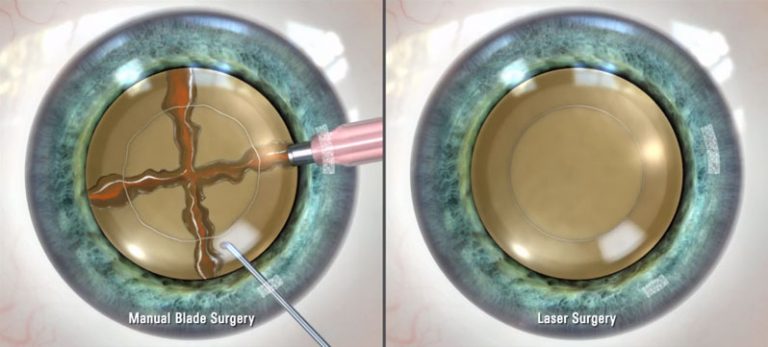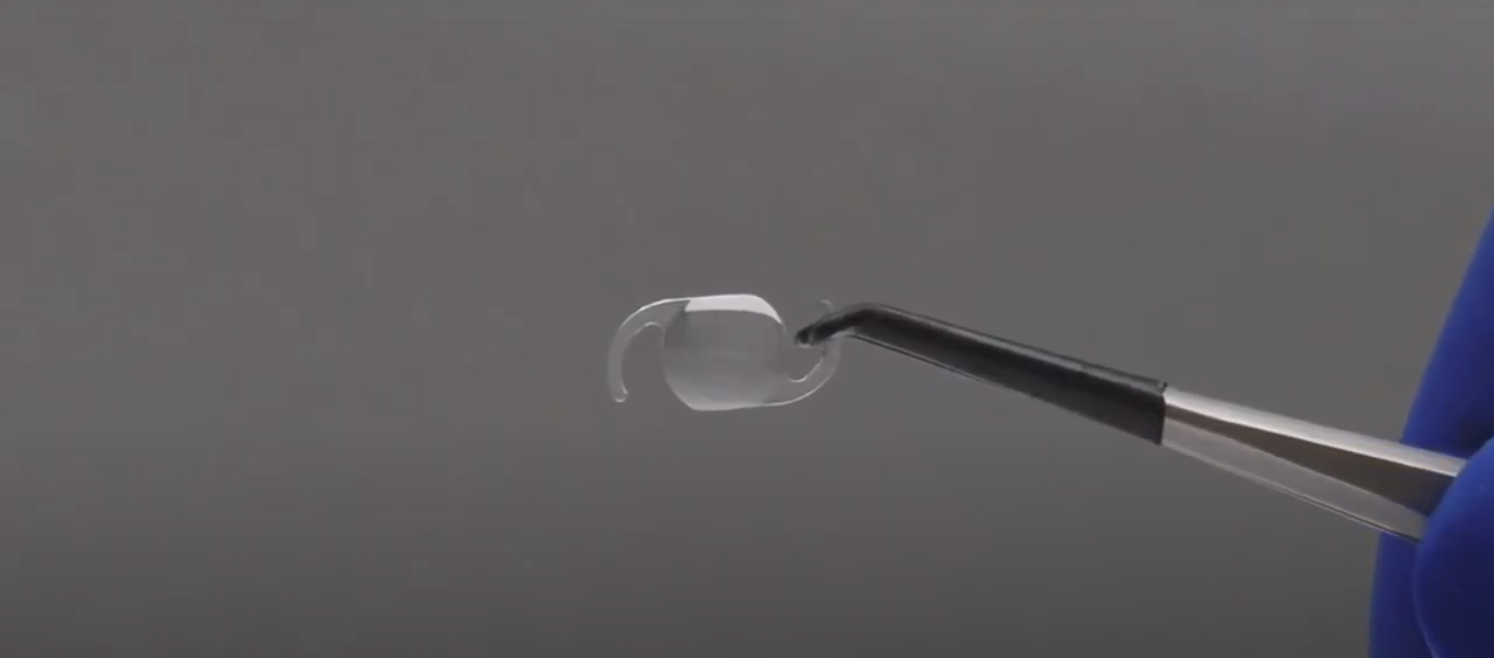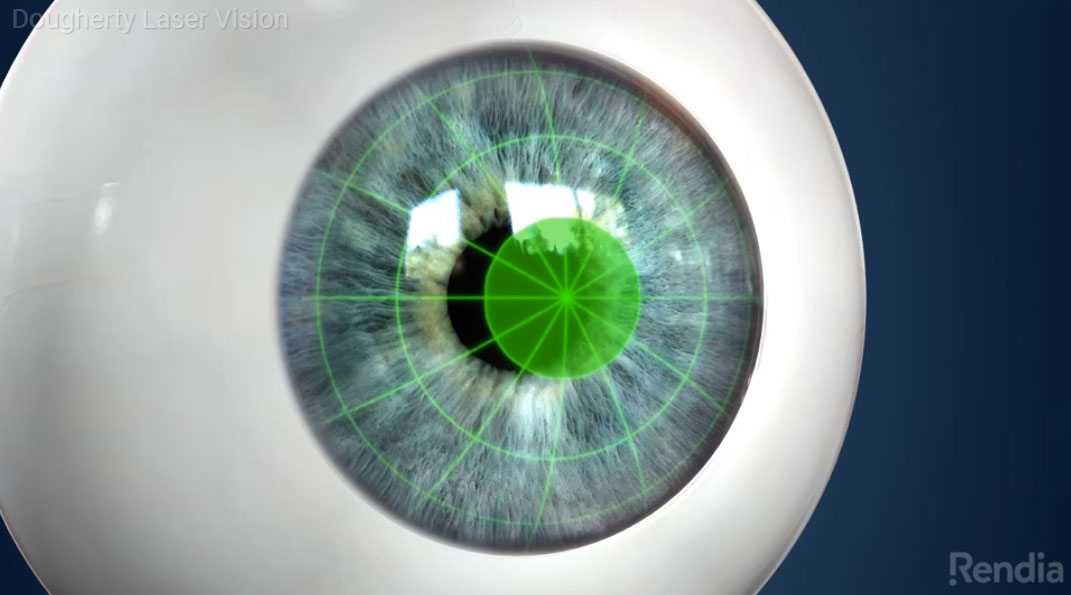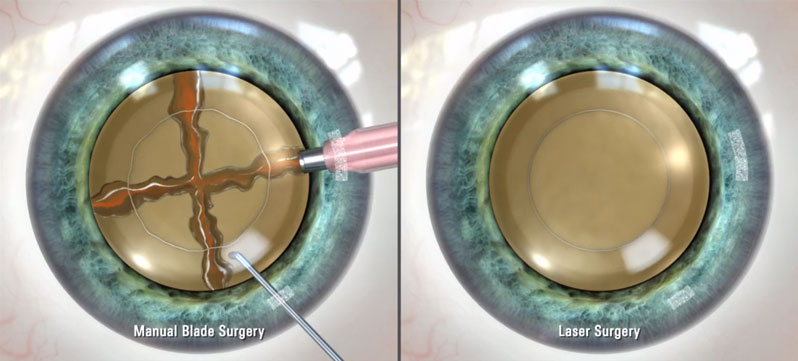Cataract Surgery
Sub Title
What is unique about DLV Vision?
We offer in house Cataract surgery! No need to be referred anywhere else for your procedure.
What Are Cataracts?
A cataract is a clouding of the natural lens of the eye that occurs slowly as we age. Cataracts are an incredibly common occurrence- The majority of Americans have a visually significant cataract or have had cataract surgery by age 80. Every human will eventually develop cataracts if they live to be old enough.
Did you know?
- 25 million Americans have cataracts
- 90% of people will develop cataract by the age of 65
- 85% of people will have clear vision after cataract surgery
Symptoms of Cataracts
Cataracts can form in one or both eyes and can cause blurry vision. The symptoms of cataract can include blurry or hazy vision that cannot be improved with glasses, poor night vision, glare and/or halo at night, difficulty reading and yellowing of the vision.
When a cataract is causing vision loss that decreases the quality of life for a patient, many opt to regain their vision with cataract surgery.
Are you experiencing any of these symptoms?
- Vision is cloudy or hazy
- Glare/Halos at night
- Difficulty reading fine print
- Do not feel comfortable driving at night
- Colors appear faded
- Your eyeglass prescription changes often or is not working
- LASIK or previous refractive surgery is no longer working
Cataract Surgery
Cataract surgery is the most common procedure performed in the United States. Cataract surgery is more advanced than ever. The solution to cataracts is to gently remove the cloudy lens and replace it with the clear, artificial lens, called an IOL (Intraocular lens). Cataract surgery is a quick outpatient procedure that does not require an overnight stay or general anesthesia. Risk factors include age, diabetes, steroids, eye trauma, smoking, and excessive sun exposure.
The first step is to schedule a cataract exam (typically covered by your medical insurance) or free cataract surgery consultation. During this examination, you will undergo a comprehensive eye exam to examine your eye, test your vision, and discuss the options available to you.
Cataract surgery is a relatively safe and effective procedure. A high percentage of patients get significantly improved vision after cataract surgery. The risks of cataract surgery are low but exist. Your doctor will discuss this in detail prior to surgery.
During cataract surgery, your surgeon will remove the cloudy lens of your eye and replace it with an artificial lens called an Intraocular Lens (IOL) in a procedure that typically takes 7-10 minutes and is performed under topical (eyedrop) anesthesia in addition to a relaxing medication that is given by mouth or IV. Cataract surgery is typically comfortable and often results in much better vision in the first few days after surgery.
Type of Cataract Surgery – Traditional vs. Laser
Traditional Cataract Surgery
Traditional cataract surgery has been used successfully for years and involves using a manual metal or diamond blade for incisions into the eye and lens followed by removal of the cloudy natural lens with an ultrasound device. Traditional cataract surgery is covered by your medical insurance.
Laser-Assisted Cataract Surgery
Laser-assisted cataract surgery involves the use of a femtosecond laser (Ziemer Femto Z8) to assist in making incisions during the cataract surgery. These incisions are more precise than manual incisions. As a result of the laser dissecting the natural lens, less ultrasound power is used for its removal, resulting in a faster recovery of vision than traditional cataract surgery.
While laser-assisted surgery offers benefit for any patient, it may be even more useful in patients with certain medical conditions of the eye including dense cataracts, traumatic cataracts, Fuch’s dystrophy (an inherited condition of the eye that can lead to significant corneal swelling after surgery) and pseudoexfoliation (a disease of the eye of unknown origin where whitish material is deposited in the front of the eye that causes small pupils and weak zonules – the delicate strings that attach the natural lens to the eye).
In Dr. Dougherty’s hands, laser-assisted is slightly safer than traditional treatments and multiple studies have demonstrated increased precision of the vision correction outcome with laser-assisted surgery. The downside of laser-assisted cataract surgery is that it is not covered by any insurance and is an out-of-pocket expense as part of a vision correction package.

Dougherty Laser Vision is the first Ophthalmologist on the West Coast to use the FEMTO LDV Z8 laser.
The Ziemer Femto LDV Z8 for Cataract Procedures
Ziemer’s Femto LDV Z8 laser is Swiss-engineered and FDA-approved. The Z8 technology provides precision in the cornea and power in the lens with fragmentation. In traditional cataract surgery, these incisions are performed manually, with a blade, in a linear fashion. Ziemer’s laser technology, however, allows for the incision to be made in a variety of patterns with an incredibly fast sequence of low-energy laser pulses, lending procedures consistently optimal results.
Read Frequently Asked Questions About The FEMTO LDV Z8
Cataract Vision Correction Packages: Lens Options
Premium IOL Package
At the time of cataract surgery, an intraocular lens (IOL) must be placed into the eye to replace your natural lens in order for you to see. Traditionally, a basic IOL was placed at the time of surgery with the expectation that glasses, or contacts would be needed to maximize vision after surgery. At DLV Vision, we offer a range of IOL’s as part of a Premium IOL package that can help improve vision and decrease or eliminate the need for glasses or contact lenses at the time of surgery. Unlike many surgeons, at DLV Vision, we see each cataract surgery as a unique opportunity to correct your vision to minimize the use of glasses. Each Premium IOL Package offered at our center includes astigmatism diagnosis and correction as well as Laser Vision Correction (LASIK or PRK) at no charge after surgery, if necessary, to maximize your vision without glasses.
Intraocular Lenses (IOL) Available at Dougherty Laser Vision
Softec HD Lens Implant
Softec HD Lens was developed to meet higher patient expectations for higher quality vision.
The Softec HD is manufactured as a bi-aspheric IOL, which improves quality of vision compared to traditional IOL’s. In addition, this lens is one of the most precisely manufactured IOL’s in the world. As a result, the Softec HD comes 0.25 D increments which allow for a more precise vision correction outcome; most IOLs on the market are only available in less accurate 0.5 D steps. Lastly and most importantly, the Softec HD is made of a hydrophilic acrylic material, which studies have shown allows for an increased depth of focus and better intermediate vision without glasses. While the Softec HD will not eliminate reading glasses unless monovision (1 eye set for distance, and 1 eye set for near) is employed, many patients get good intermediate vision in addition to excellent distance vision without glasses.
Find out more about the Softec HD Lens, watch the video below.

Toric Astigmatism Correcting IOLs
The cornea (clear window in front of the eye) on a normal eye has a circular shape whereas, in an eye with astigmatism, the cornea is shaped more like an oval. This oval shape creates 2 points of focus in the eye.
Astigmatism is a common eye condition that affects millions of people and often leads to blurred or impaired vision at both distance and near. With advancements in lens technology, it is now possible to correct astigmatism with Toric lenses that correct astigmatism. The FDA Approved premium Toric lens is a single “vision” lens that is implanted during cataract surgery to replace the clouded lens.

Multifocal IOLs
If you’re looking to release yourself from the dependency of glasses after surgery and you cannot tolerate monovision (1 eye set for distance and 1 eye set for near), you should ask about the options for multifocal lenses to expand your range of vision. Multifocal IOL’s work by using diffraction rings on the lens that optically split the incoming light into distance and near so that you can see both distance and nearby the brain paying attention to the appropriate image.
AcrySof IQ PanOptix
PanOptix Trifocal IOLs to See Near, Intermediate and Far
The PanOptix Trifocal IOL is designed to optimize intermediate vision without sacrificing near or far distance vision, providing many benefits to cataract patients, especially those with astigmatism.
Trifocal IOLs are ideal for patients who enjoy a modern, active lifestyle – indoors and outdoors, from mobile screen to computer screen to TV screen, and other common daily activities. According to recent study data, more than 99% of patients who had a procedure with the PanOptix lens would choose the lens again.
Acrysof IQ Vivity
The Vivity IOL is designed to optimize a high-quality distance and intermediate vision with minimal effect on vision quality. The Vivity IOL is an extended depth-of focus IOL that uses a new, non-diffractive technology called X-Wave that uses all available light to create a continuous, extended range of vision. The Vivity lens is available in a Toric IOL model, so that astigmatism can be corrected at the time of refractive lens exchange. Vivity IOL is a great option for patients who are monovision intolerant and are not candidates of Panoptix IOL (multifocal) due to previous refractive surgery or retinal issues. Vivity IOL is a fantastic lens for distance, intermediate, and some reading but less reading than Panoptix.
Basic Monofocal IOLs
Monofocal IOL’s are lenses that have been used for decades as part of cataract surgery. The advantage of a Monofocal lens it that they allow your doctor to set different ranges of focus. After your consultation, your doctor will suggest setting the distance for near or far vision. Based on the focus setting of your Monofocal lens, a patient will still need to wear glasses for distance vision or reading
glasses for close up. Most cataract patients that choose the Monofocal lens elect to set the IOL’s for distance vision, then relying on reading glasses for close up objects.
Extended Depth of Focus IOL
Symfony IOL/ Symfony Toric IOL
First FDA approved Extended depth of focus (EDOF) lenses on the market are Symfony IOL & Symfony Toric IOL (Johnson & Johnson). Symfony IOL uses diffractive rings to increase the depth of focus. Symfony IOL gives excellent distance vision, intermediate, and some near. Symfony IOL has glare/less halo than a multifocal IOL but patients may still need glasses for reading. Symfony comes in a toric option for patients with astigmatism as well.
How to prepare for cataract surgery?
The night before surgery:
- Wash your face before you go to sleep
- Do not eat or drink anything after midnight
The morning of surgery:
- Take all of your routine medications with small sips of water.
- Wash your face thoroughly before coming to the surgery center.
- Wear freshly laundered clothing. Please dress comfortably.
- Do not apply makeup.
- Nothing to eat or drink within 6-8 hrs of your check-in time.
Cataract Surgery Recovery
Cataract surgery recovery is quick for most people. Cataract surgery is typically comfortable and often results in much better vision in the first few days after surgery. It is important to have your check up with your doctor at 1 day, 1 week, 1 month, and 3 months post cataract surgery.
Frequently Asked Questions
Is the surgery the only option for cataract?
Without surgically removing the cataract, most patients will continue to have blurred vision, which can lead to significant vision loss. Removing the cataract surgically is the only way to improve vision
How soon can one drive after cataract surgery?
As soon as one meets the visual acuity criteria (20/40) and feels comfortable enough with their vision to drive. This could be as early as the next day after surgery
Is cataract surgery serious?
All surgery involves some risk, so yes, it is serious. However, cataract surgery is the most commonly performed surgery in the United States and is highly likely to improve your vision. Many cataract surgeons have several thousand procedures under their belt. Choosing a surgeon with this much experience will reduce the risk of something going wrong
What are possible side effects of cataract surgery?
As with any surgery, pain, infection, high eye pressure, swelling and bleeding are possible, but very few patients have serious problems or complications. Your surgeon may prescribe medications for any side effects. Retinal detachment can also occur occasionally. Be on the lookout for excessive pain, vision loss, bright flashes of light, or nausea, and report these symptoms to your eye surgeon immediately
What types of Intraocular (IOLS) lenses are there?
Standard IOL’s – The basic Government Issue IOL. You will often need to wear glasses with this type of IOL
Aspheric IOL’s – This type of IOL has aspheric optics, which improves vision quality
Astigmatism correcting IOL’s – These IOL’s correct astigmatism, where the eye is steeper in 1 direction than the other (much like a football cut in half). An eye without astigmatism has the same curvature in all directions (like a basketball cut in half).
Presbyopic correcting IOL’s – These IOL’s improve both distance and near vision without glasses and are most effective at decreasing or eliminating the use of glasses or contact lenses after surgery
What is unique at DLV? In-office cataract surgery
Dougherty Laser Vision offers in-office cataract surgery as an alternative to patients who have an HMO, high deductible PPO insurance or no insurance at all. Benefits of in-office surgery include less cost to the patient and more convenience than a traditional surgery center. In addition, we can offer cataract treatment on both eyes on the same day.
For HMO patients, the other benefit is that we are able to offer Premium intra-ocular lenses (IOLs) to improve vision without glasses or contact lenses. Many surgeons (including most HMO surgeons) only offer the basic IOL that requires the use of glasses for best vision after surgery. With Premium IOL’s placed in our in-office cataract surgery suite, you can have your astigmatism treated and potentially decrease or eliminate the need for glasses or contacts for both distance and near vision!
If you would like to learn more about your options for cataract surgery, call or schedule a Cataract Examination at our offices in Westlake Village, Beverly Hills, Camarillo, Simi Valley, or Encino today.
All of insurance coverage
Cataract Surgery & Insurance Coverage
Most medical insurances cover basic cataract surgery.
Dougherty Laser Vision accepts:
- Anthem
- BlueShield
- Aetna
- Cigna
- UHC PPO’s
- Medicare
- Ventura County Medicaid
- Gold Coast Health Plan
- If you have a question about a different insurance provider, please contact us here.
To determine if cataract surgery is right for you, you will need to first schedule an initial cataract exam. This exam is also typically covered by most insurances (if medically necessary) but subject to each patient’s individual insurance benefits. Our team is happy to help you navigate this process and answer any and all questions you have about insurance coverage.

